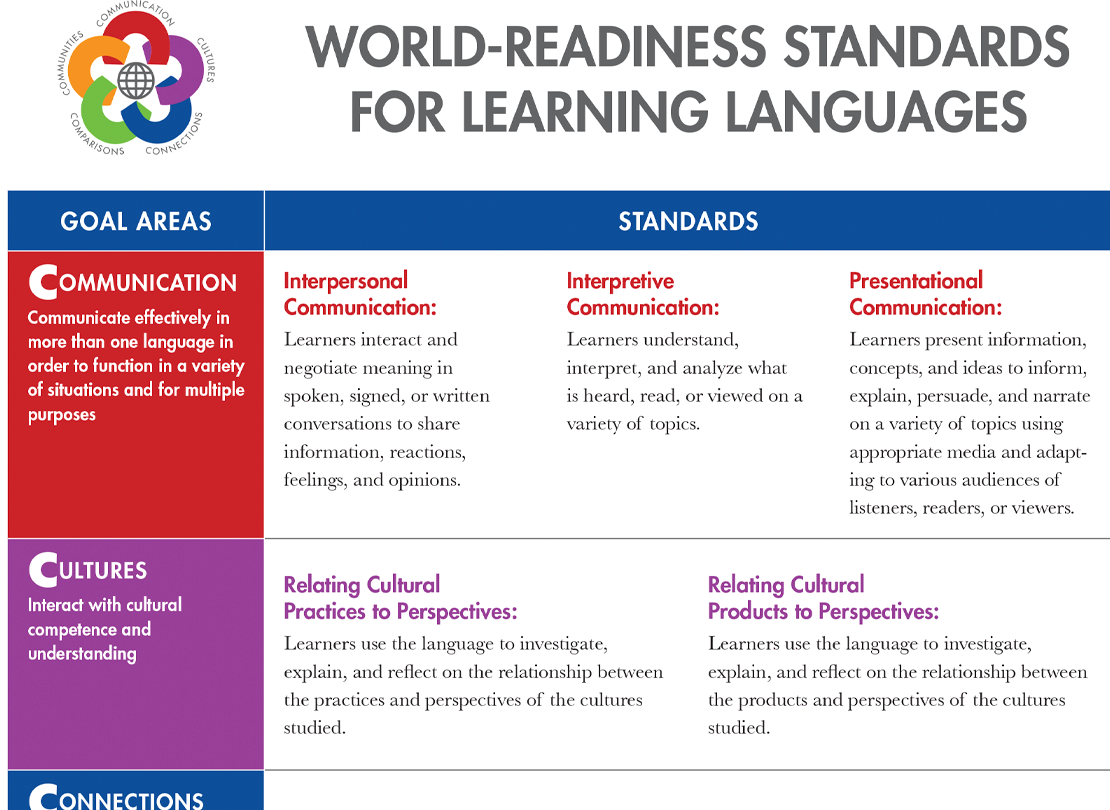COMPARISONS
Develop insight into the nature of language and culture in order to interact with cultural competence
- Language Comparisons: Learners use the language to investigate, explain, and reflect on the nature of language through comparisons of the language studied and their own.
- Cultural Comparisons: Learners use the language to investigate, explain, and reflect on the concept of culture through comparisons of the cultures studied and their own.
Download TLE Article
COMMUNITIES
Communicate and interact with cultural competence in order to participate in multilingual communities at home and around the world
- School and Global Communities: Learners use the language both within and beyond the classroom to interact and collaborate in their community and the globalized world.
- Lifelong Learning: Learners set goals and reflect on their progress in using languages for enjoyment, enrichment, and advancement.
Download TLE Article
Statement of Philosophy
Language and communication are at the heart of the human experience. The United States must educate students who are linguistically and culturally equipped to communicate successfully in a pluralistic American society and abroad. This imperative envisions a future in which ALL students will develop and maintain proficiency in English and at least one other language, modern or classical. Children who come to school from non-English backgrounds should also have opportunities to develop further proficiencies in their first language.
Read "A Decade of Foreign Language Standards: Impact, Influence, and Future Directions." (PDF) | Survey Results (PDF)
The National Standards Collaborative Board is a collaborative effort of the American Association of Teachers of Arabic, American Association of Teachers of French, American Association of Teachers of German, American Association of Teachers of Italian, American Association of Teachers of Japanese, American Association of Teachers of Korean, American Association of Teachers of Modern Greek, American Association of Teachers of Spanish and Portuguese, American Classical League, American Council of Teachers of Russian, American Council on the Teaching of Foreign Languages, American Sign Language Teachers Association, Chinese Language Association of Secondary-Elementary Schools, Chinese Language Teachers Association, Modern Language Association, National Council of Less Commonly Taught Languages, and National Standards Task Force for Hindi.
Original 1996 National Standards Executive Summary (PDF)
